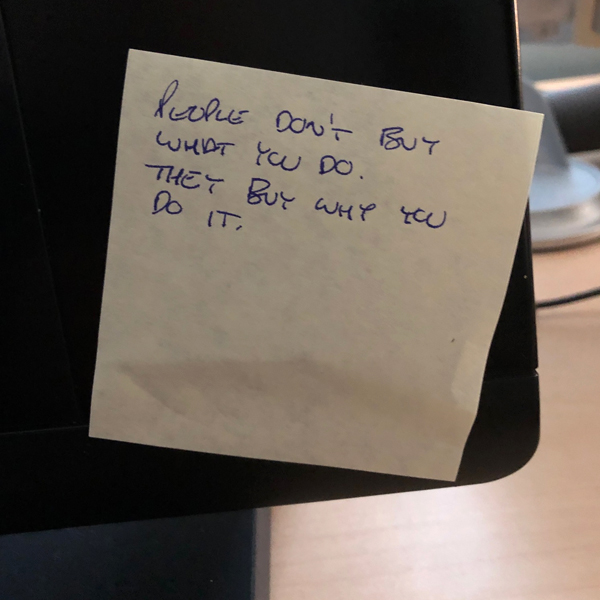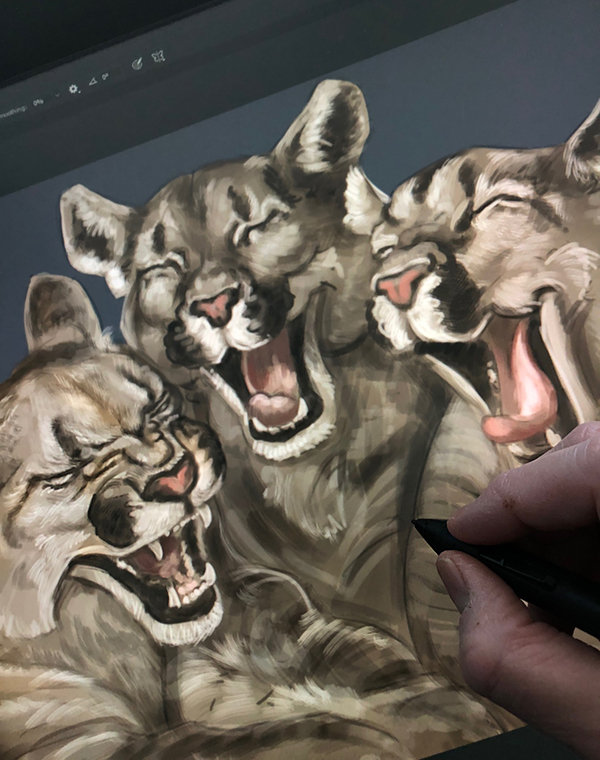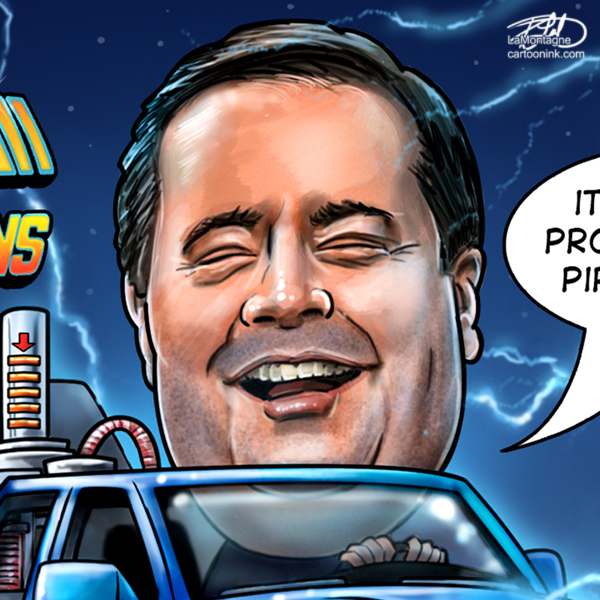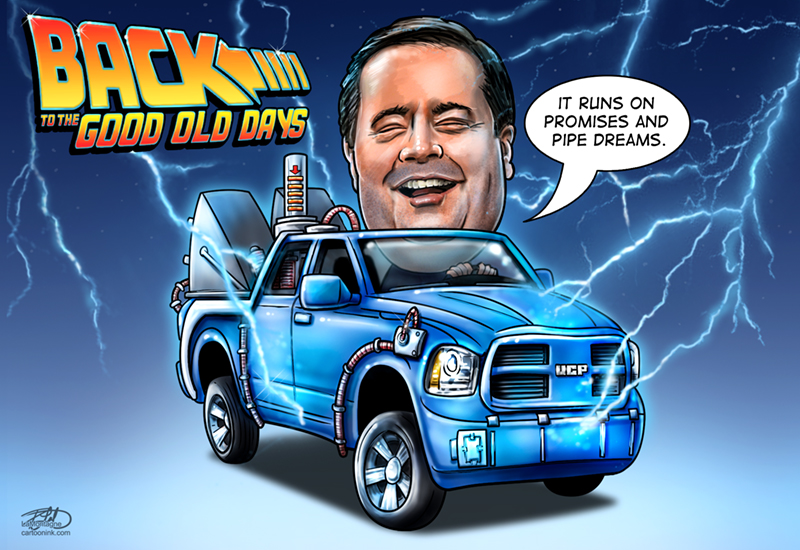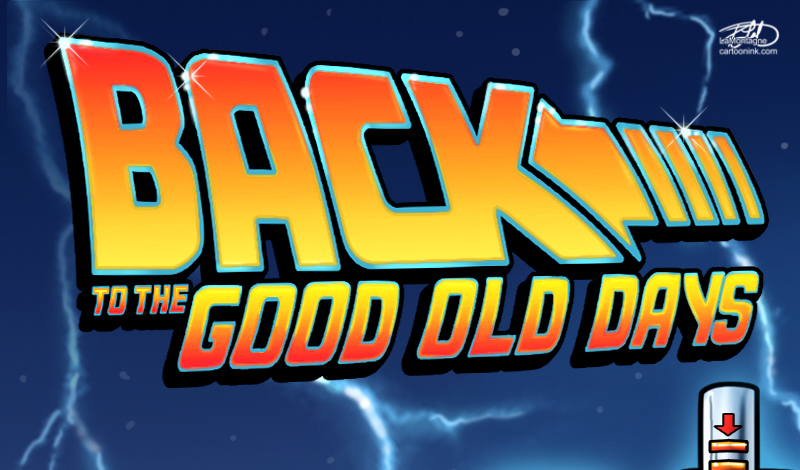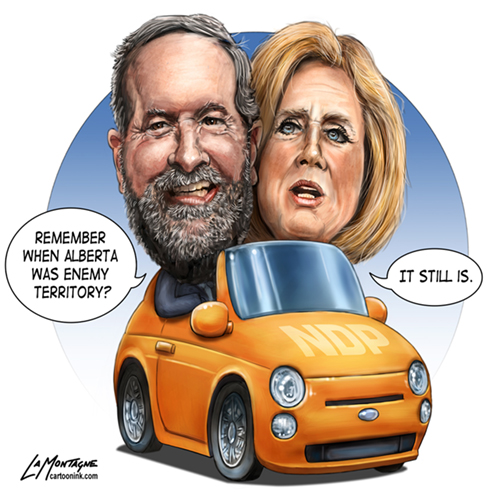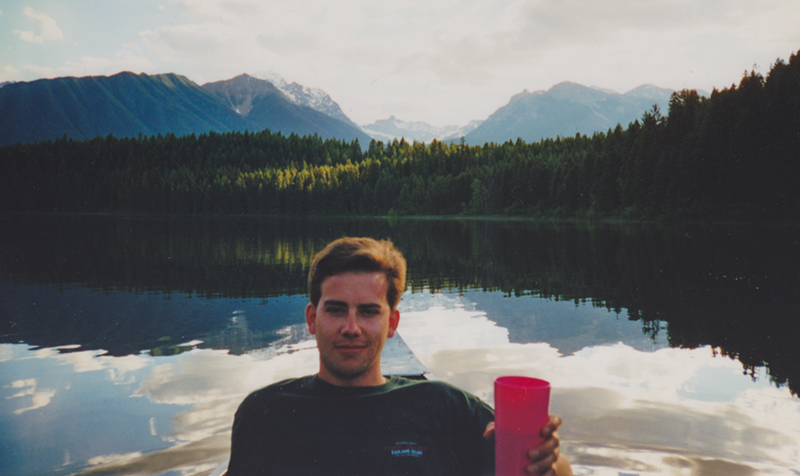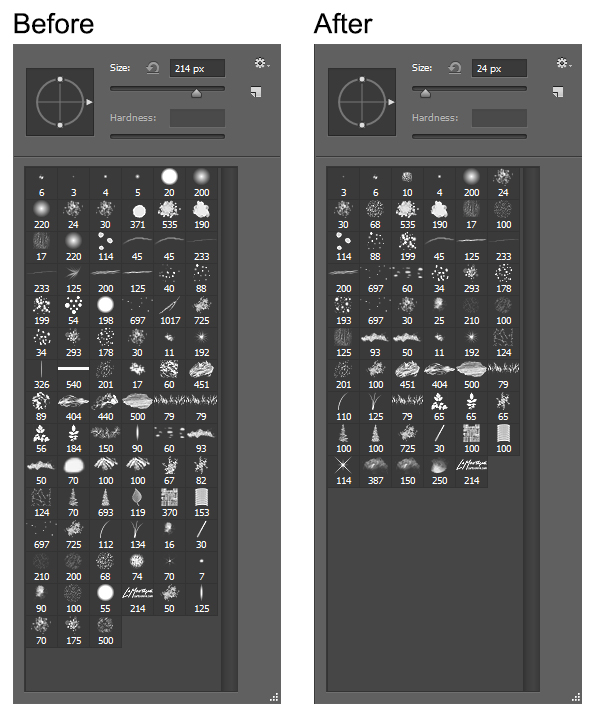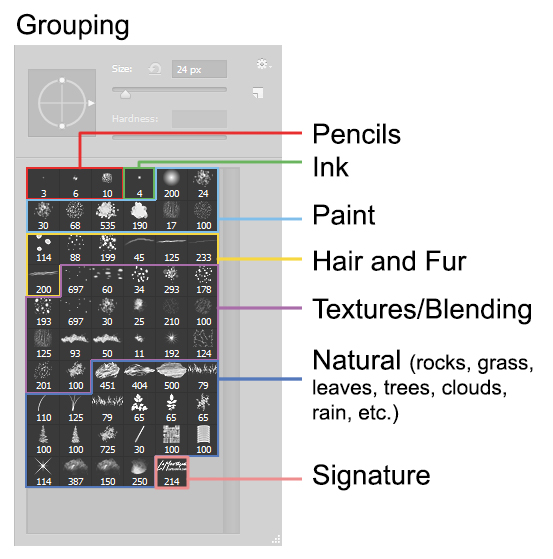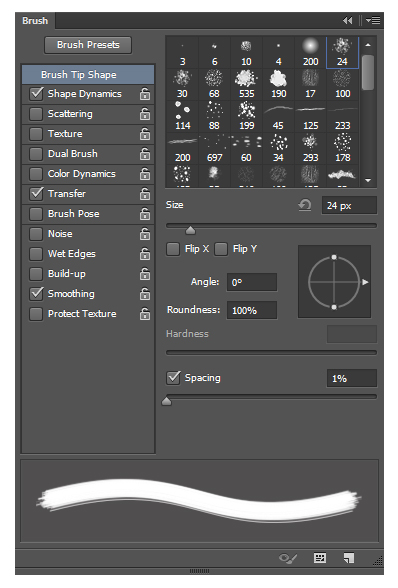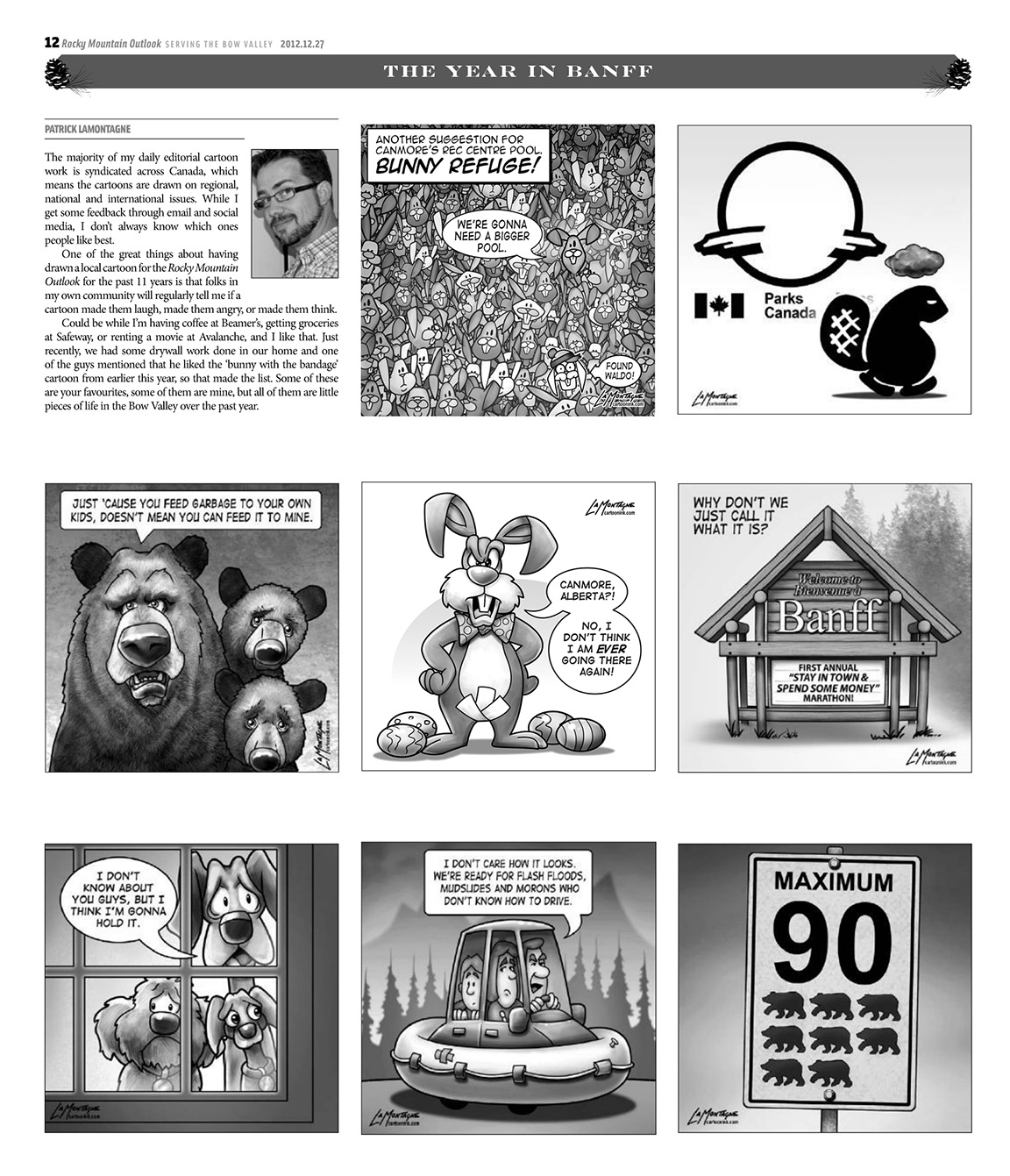
Every so often, I like to record a high speed ‘how it’s made’ video for a cartoon or a painting. I’d love to do more of these, but they’re time consuming.
With the over-the-shoulder view, the kind most people want to see, I used my Canon DSLR on a tripod for the best result. The challenge is that it needs to be close enough to capture the pen on the display, but back far enough so that I don’t bump into it with my shoulder or chair.
I’ve been drawing on Wacom tablets and displays for almost twenty years, so a lot of it is muscle memory. I go through the motions without thinking about the technology. As any artist in any medium can attest, once you’ve been using them for any length of time, the tools become extensions of your hands and arms. You think about the image you’re creating, not about the tools you’re using.
When I record the process, however, the tools are front of mind, which means the cartoon or painting takes longer. There’s really no flow to it and the process feels clunky.
When I’m painting, I can go for an hour without thinking about much else. When recording, I have to stop the camera after about ten minutes. Software is hardly perfect and by recording multiple short segments, it wouldn’t matter too much if I lost one. If I recorded all of it at once, however, that one file becomes a lot more precious.
I don’t record every brush stroke because it would be incredibly boring. I record ten minutes, shut the camera off, draw or paint for ten or twenty more minutes, then record again. There needs to be a big enough change between segments to keep the viewer’s interest.
Once I have enough from the camera, then I’ll often record some screen capture. It’s no longer the display itself, but software in my computer recording what is happening on the screen. This doesn’t work all that well for painting detailed hair and fur because the cursor, brush and detail is so small, that it’s barely discernible to the viewer.
And again, incredibly boring.
Once I have all of the files recorded, from the camera and computer, I’ll bring them into my video editing software.
How I decided on the length of the video was the music I used as accompaniment. That isn’t always the case, but usual for cartoon videos. I can shorten visual segments, change the playback speed, and more easily mess with the footage than I can with the audio. This Christmas tune is around two minutes, which is a good length for a Youtube video, since our attention spans keep getting shorter.
I didn’t record the whole sketching process because I knew I’d have to mess about with the poses to get all three characters in, plus the talk bubbles. That’s why you can see my tracing over my own sketch. While that would no doubt be of interest to the beginner or student, not so much for the average viewer.
These videos, it’s all about compromise for content.
For those interested in the tech part, I draw almost exclusively in Photoshop on a Wacom Cintiq 24HD. This recording, however, was done on a Wacom Cintiq 16 display, as they sent me one in August. I put it through its paces while painting my White/Amur Tiger video.
It’s a nice display and I enjoy drawing with it, so that’s why I chose it again for this video.
For recording and editing, I use Camtasia Studio 8. It’s a simple interface that gives me what I need without complicating things. I’ve been using this software for many years and it gets the job done.
While this video added an extra few unpaid work hours to my Sunday morning, I created it to give my newspaper clients some added bonus content for their websites and social media feeds. In any business, you’ll rarely go wrong by offering added value from time to time.
As always, feel free to share it, along with any of my other work.
Cheers,
Patrick
@LaMontagneArt
If you’d like to receive my newsletter which features blog posts, new paintings and editorial cartoons, follow this link to the sign up form.


